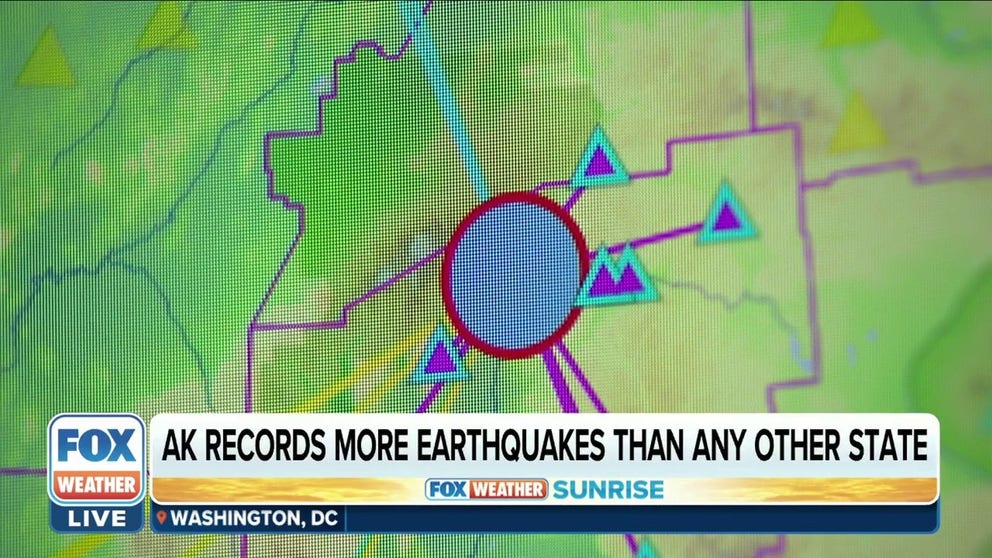Alaska experiences an earthquake every 10 minutes, scientists say
Alaska experiences more earthquakes than any other state
Alaska records more earthquakes than any other state
In the last five years, the Alaska Earthquake Center has recorded more than 250,000 earthquakes in Alaska alone. FOX Weather's Max Gorden spoke with the scientists who are tracking and studying the state's seismic activity.
Alaska experiences more earthquakes than any other state. And while many of the earthquakes shake unpopulated parts of the Last Frontier, a group of scientists is keeping tabs on the tremors.
Earthquakes in Alaska are part of everyday life due to the state being extremely seismically active.
So in 1987, the Alaska Earthquake Center was founded to monitor and research what happens when one of these events strikes.
HOW TO WATCH FOX WEATHER ON TV
FOX Weather’s Max Gorden visited the Alaska Earthquake Center in Fairbanks and was able to see an earthquake unfold right before his eyes.
"Oh, here’s an earthquake in Alaska," Natalia Ruppert, Alaska Earthquake Center Senior, said.
Gorden watched as squiggles appeared on a screen.
And even though Ruppert said that nobody likely felt it, the earthquake registered as a magnitude 1.5 on the seismic sensors in south-central Alaska.
"It’s kind of halfway between Fairbanks and Anchorage," Ruppert said.
FIRES, HEAT AND EARTHQUAKES: ALASKA CURRENTLY THE EPICENTER OF EXTREME WEATHER
Earthquakes are nothing new in the state. Scientists say that one happens about every 10 minutes in Alaska, and according to the USGS, Alaska is the site of the second-largest earthquake ever recorded.
Ruppert says that Alaska has so many earthquakes because "It’s the largest state. And also, because we have many, many faults here."
Fault lines are cracks in the earth where blocks of rock move past each other.
"All those interactions are continuously causing earthquakes," Ruppert said.
Probably the most well-known Alaskan earthquake was the Good Friday earthquake of 1964. It was a 9.2 tremor that killed 131 people.
"Violent ground shaking caused lots of structures and buildings to collapse. It also caused a large tsunami," Ruppert said about the Good Friday earthquake.
Luckily, large earthquakes like the one in 1964 are relatively rare.
But big or small, the Alaska Earthquake Center is constantly monitoring the ground for movement with its series of sensors.
The center also educates people about earthquake safety and gets the word out about an earthquake events on social media.
"We get tweets and Facebook messages and things like that sometimes while it’s still shaking," Lea Gardine, Seismologist and Communications Manager for the Alaska Earthquake Center, said.
EAST VS. WEST: WHY EARTHQUAKES ARE FELT DIFFERENTLY ON EITHER SIDE OF THE US
They also fight misinformation about potential aftershocks or damage reports in the wake of an earthquake.
"Giving people the science. Giving people the facts, so they understand – not what they’re up against, but what they’re dealing with," Gardine said.
Meanwhile, scientists at the Alaska Earthquake Center say they hope to create an early warning system like the ones used in California, Oregon and Washington.
"In Alaska, we are still lacking as far as infrastructure development, but we are working towards that goal," Ruppert said.
Because even though big shakers are rare here, those at the center will keep watching out for Alaskans.
"That’s the end goal. To save lives," Ruppert said.





